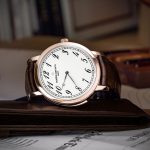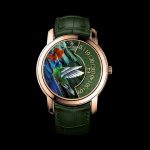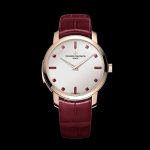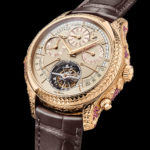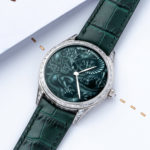Up Close: Vacheron Constantin Les Cabinotiers Minute Repeater Ultra-Thin “Thunder God” and “Wind God”
An exquisite pair inspired by a Japanese national treasure.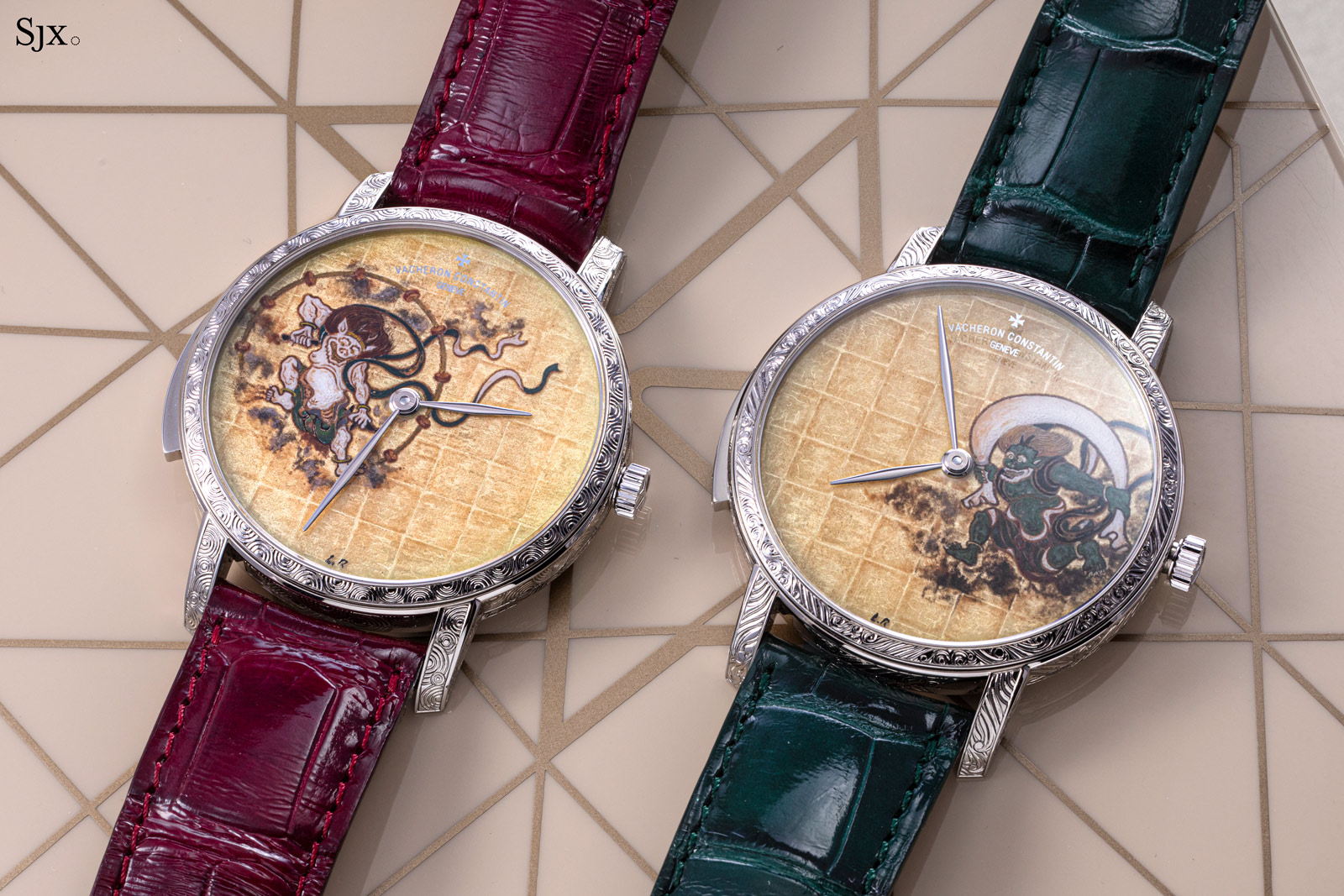
One of the most striking – no pun intended – timepieces created by Vacheron Constantin in recent memory are Les Cabinotiers Minute Repeater Ultra-Thin “Thunder God” and “Wind God”. Created for an Japanese-themed art exhibition in 2022, the two form a matched pair of striking watches, each featuring an miniature enamel dial reproducing one half of Wind God and Thunder God, a pair of folding screens so important they are a National Treasure of Japan.
Initial thoughts
Each year Vacheron Constantin (VC) introduces a sizeable Les Cabinotiers collection, typically several dozen watches in all, made up of one-off timepieces that are either complicated, decorated with artisanal techniques, or both. Last year’s line-up included a handful of ornate tourbillon watches and a diamond-set dragon watch. The “Wind God” and “Thunder God” duo, however, rank amongst the most impressive of the Les Cabinotiers.
“Wind God” and “Thunder God” are variants of the regular production VC minute repeater, which is ordinarily a somewhat plain, large watch with a slim profile. The 41 mm case of the repeater, however, makes it ideal as a canvas, particularly for artwork that is large scale in real life, as the Wind God and Thunder God folding screens are.
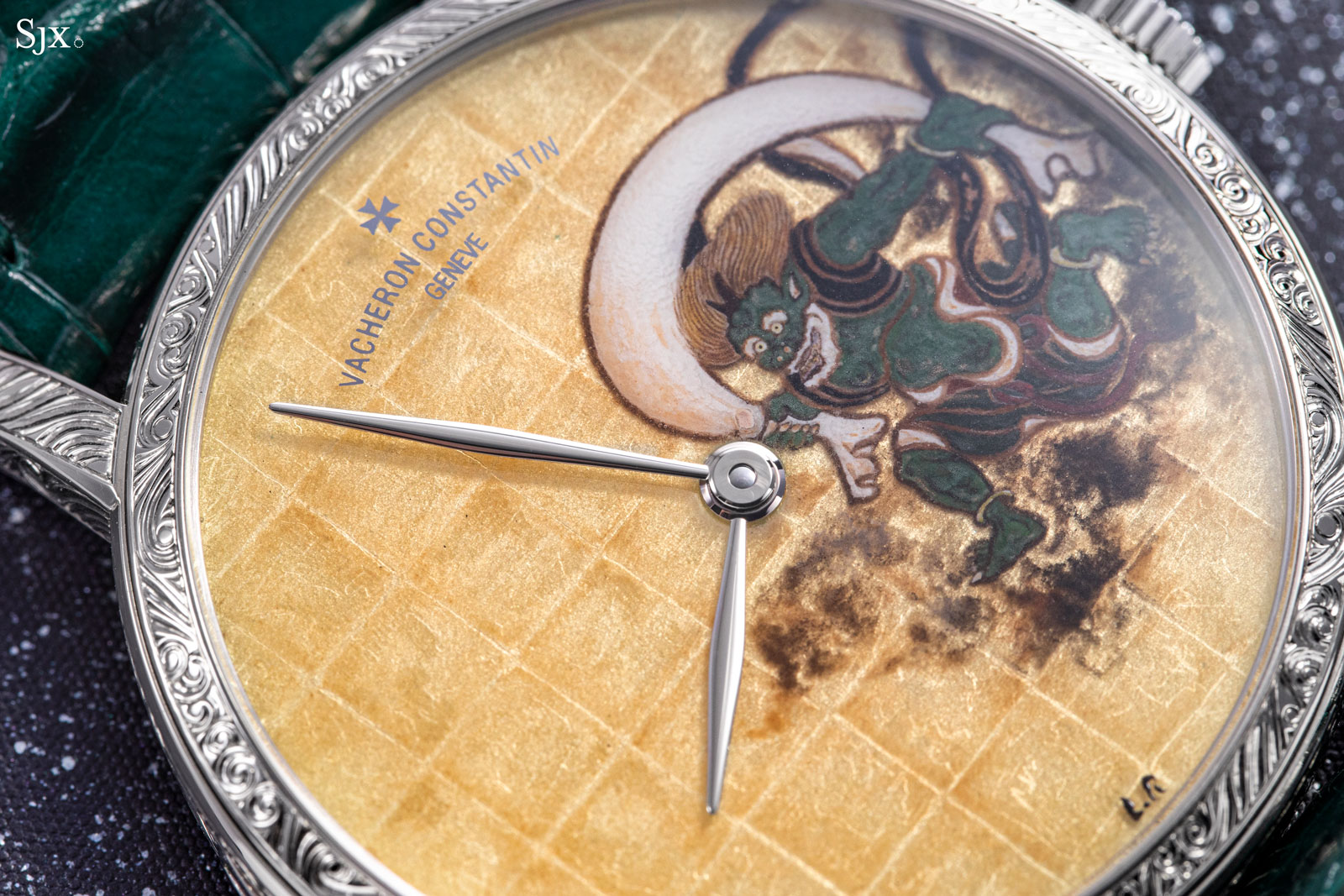
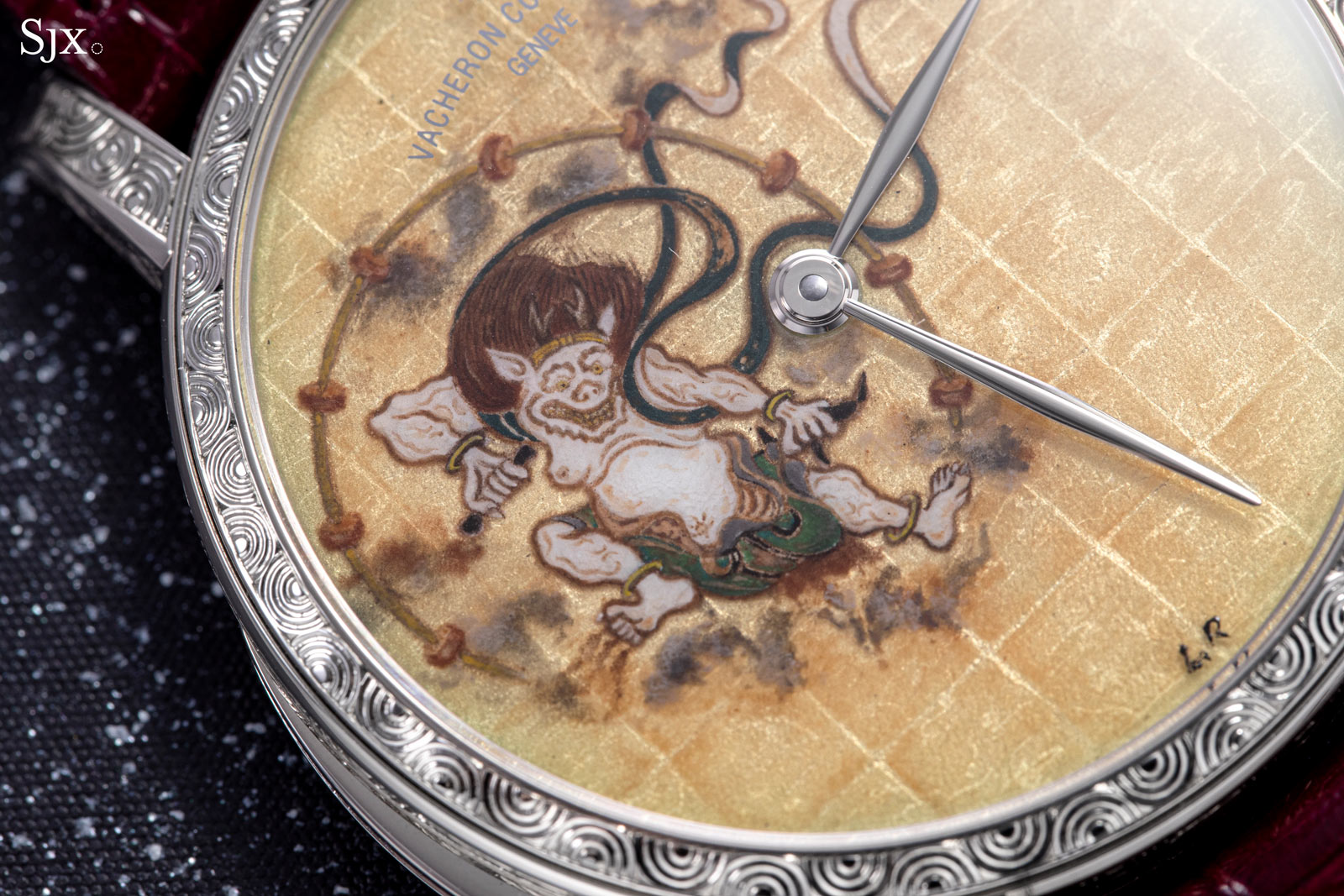
At a distance, both watches appear to be exceedingly plain, but up close each reveals remarkable miniature enamelling on the dial and a finely chased case accented by gemstones on the minute repeater slide. The case engraving is perhaps unnecessary, but the baguette-cut stones are tasteful.
Even though each watch offers a great deal of decorative detail, as well as a high-quality complicated movement, the highlight is the enamel dial. The two dials reproduce the famous folding screens in exceptional detail, even reproducing the gold-leaf surface of the screens in enamel.
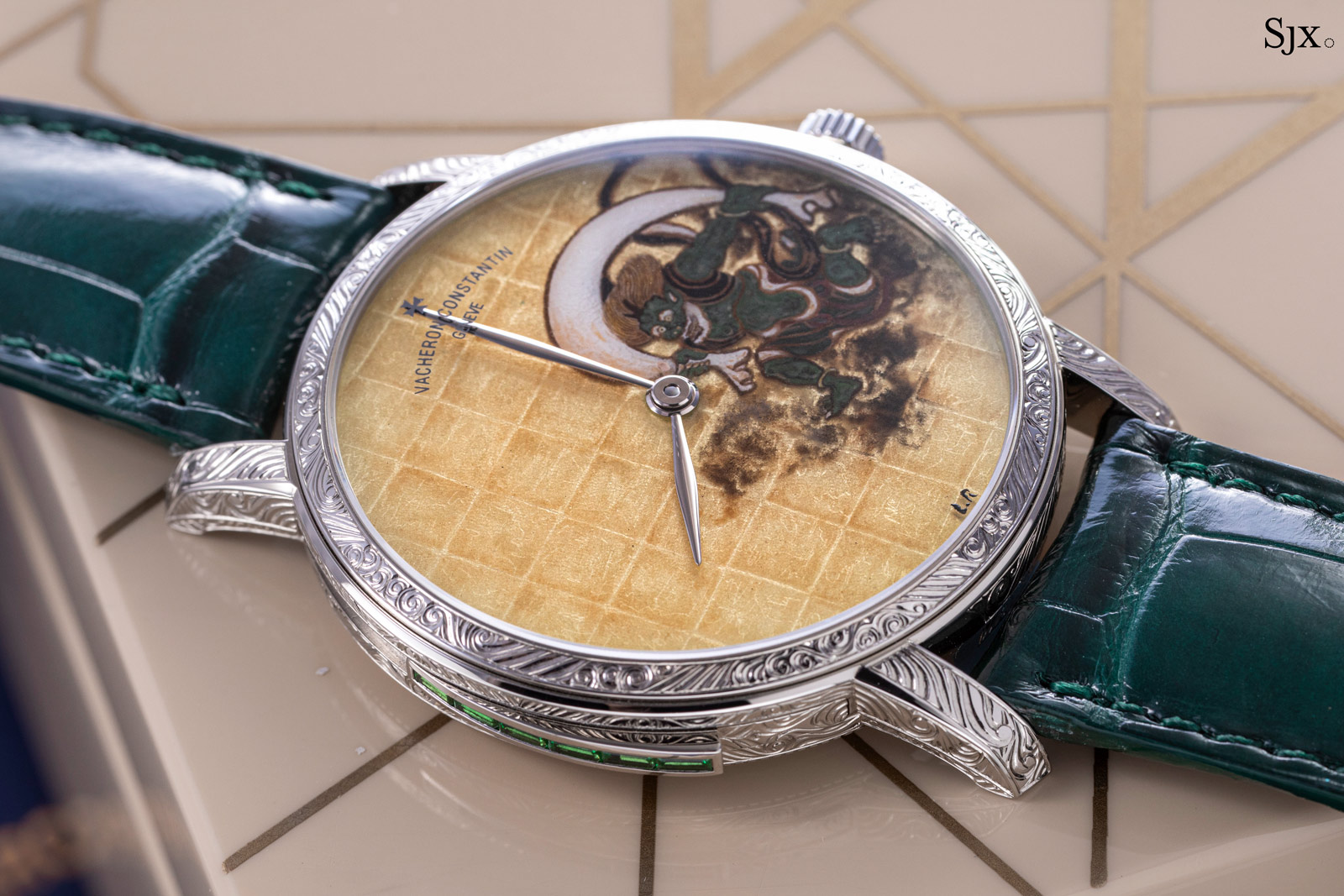
The two watches are unquestionably beautiful in themselves, but also unusual in the motifs they reproduce. Watches that reproduce famous artworks are familiar enough, particularly in high-end Geneva watchmaking. Noted enamellers like Suzanne Rohr and more recently Anita Porchet have made careers in reproducing famous paintings in miniature enamel.
VC itself has produced various Les Cabinotiers watches in the past that reproduce artwork found in the Louvre and the Met – the most incredible is arguably the Vermeer grande sonnerie pocket watch – but East Asian art is less common in high horology, although Asian themes like the Chinese zodiac dragon are frequently employed.
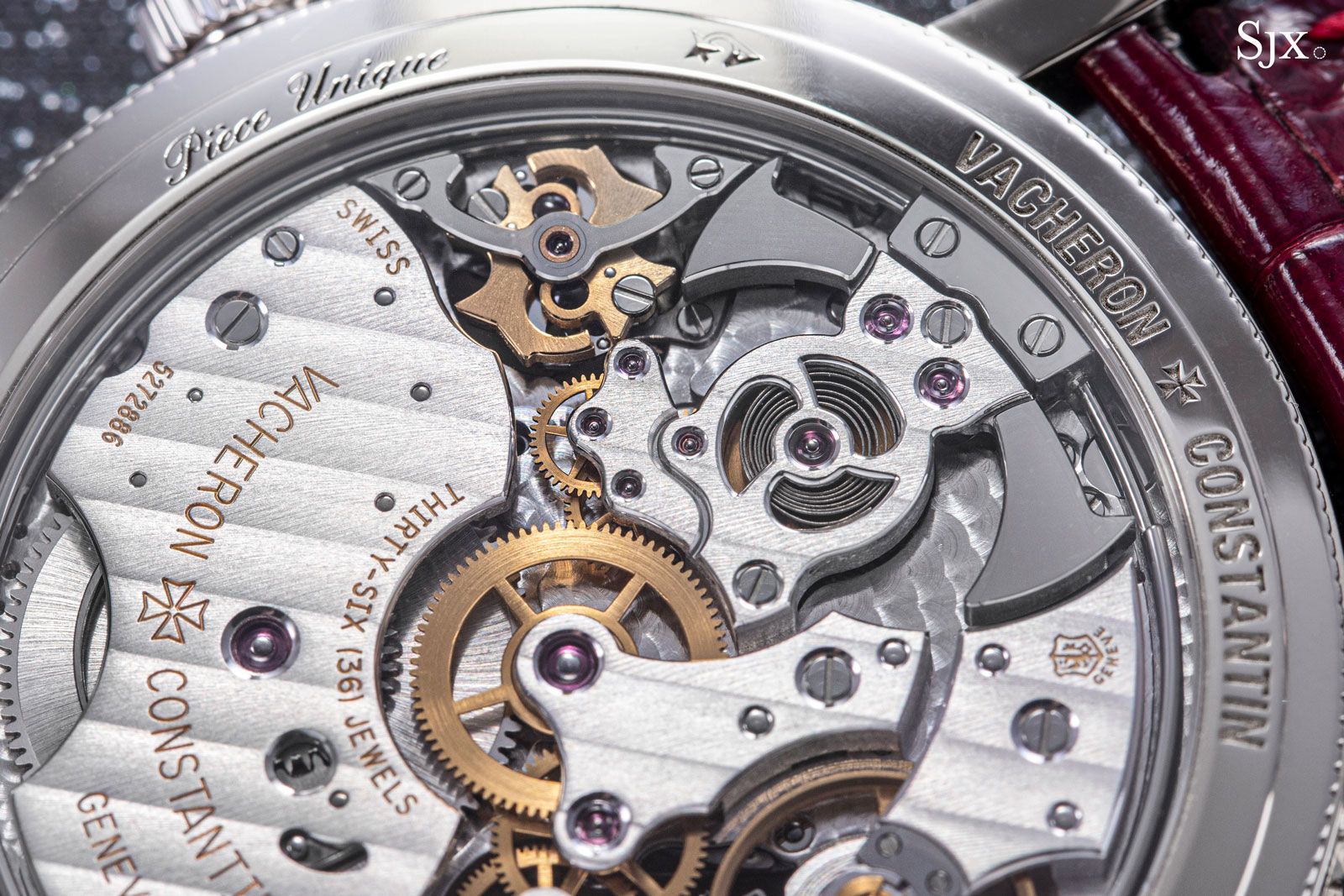
The cal. 1731 inside
Gods of wind and thunder
風神 (Fūjin) and 雷神 (Raijin) – literally translated as “Wind God” and “Thunder God” – are often depicted as a pair, sometimes as statues standing guard at the entrance to temples in Japan. But perhaps the most famous depiction of the two deities are Wind God and Thunder God, the pair of folding screens created by Tawaraya Sōtatsu (1570-1640) in the early 17th century. Regarded as one of the most accomplished and influential painters of the Edo Period, Sōtatsu helped establish the Rinpa School of Japanese painting defined by its use of vibrant colours and patterns.
Now on display at the Kyoto National Museum, Sōtatsu’s Wind God and Thunder God is arguably the definitive depiction of the twin gods – search for “wind god thunder god” online and all the leading results point to his painting. The screens are a National Treasure, the Japanese government’s highest level of recognition for a cultural object, but were already important in past centuries, so much so that they were reproduced by notable artists in the decades following Sōtatsu’s death.
Subsequent versions of the screens were painted by Ogata Kōrin (1658-1716) at the start of the 18th century and later that century by Sakai Hōitsu (1761-1829). Kōrin’s and Hōitsu’s versions of Wind God and Thunder God are significant artworks in themselves, with both being Important Cultural Property, protecting them from being altered or exported from Japan.
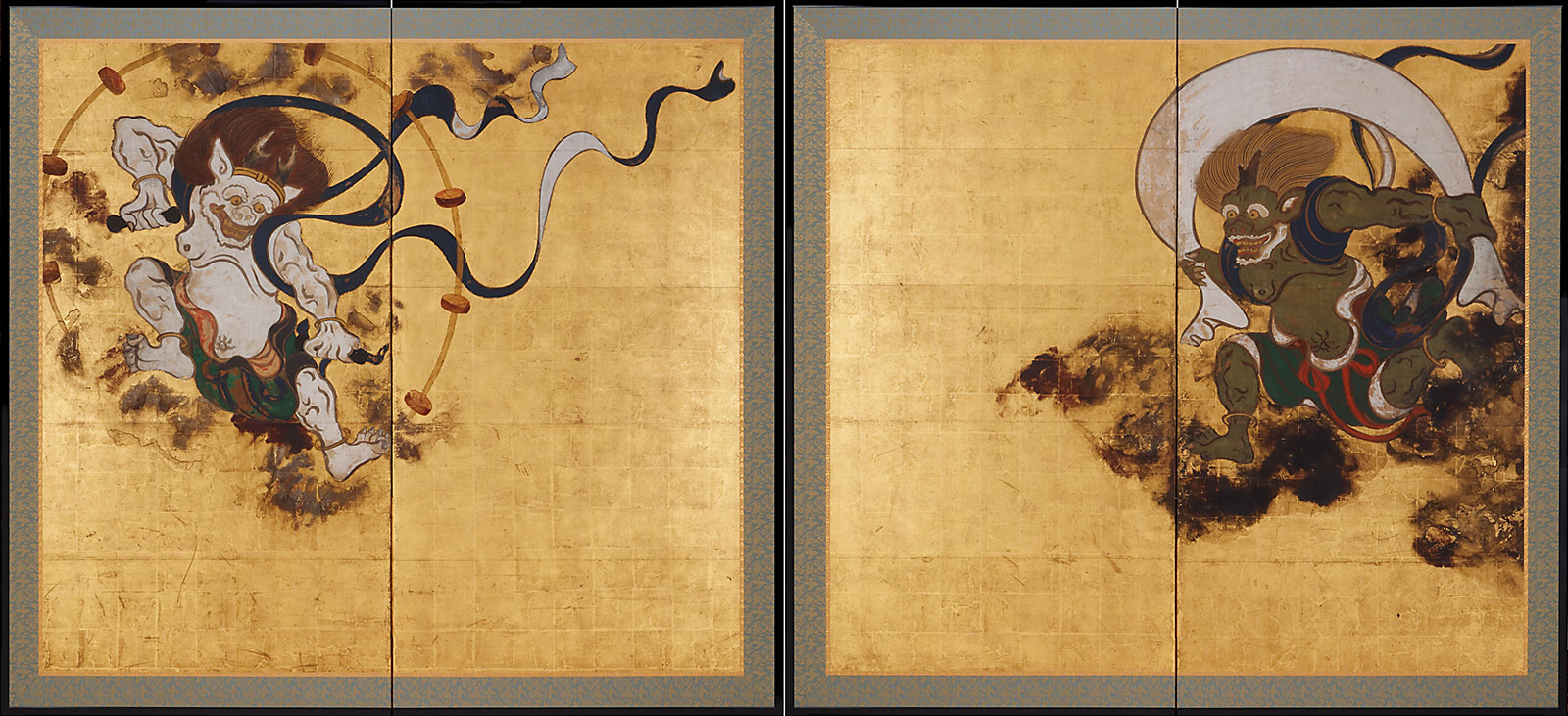
Wind God and Thunder God by Sōtatsu. Image – Wikimedia Commons
The watches each depict one screen from Sōtatsu’s Wind God and Thunder God but on a vastly different scale. The original screens each measure about 1.5 m high and 1.7 m wide, while the enamel dials are around 37 mm in diameter, or about 2% of the area of the screens. Despite the drastic change in scale, the enamel dials manage to capture the magic of the artwork. The work is all the more impressive considering how different enamel and gold are as a medium compared to the screens, which are in ink and colour on gold-foil paper.
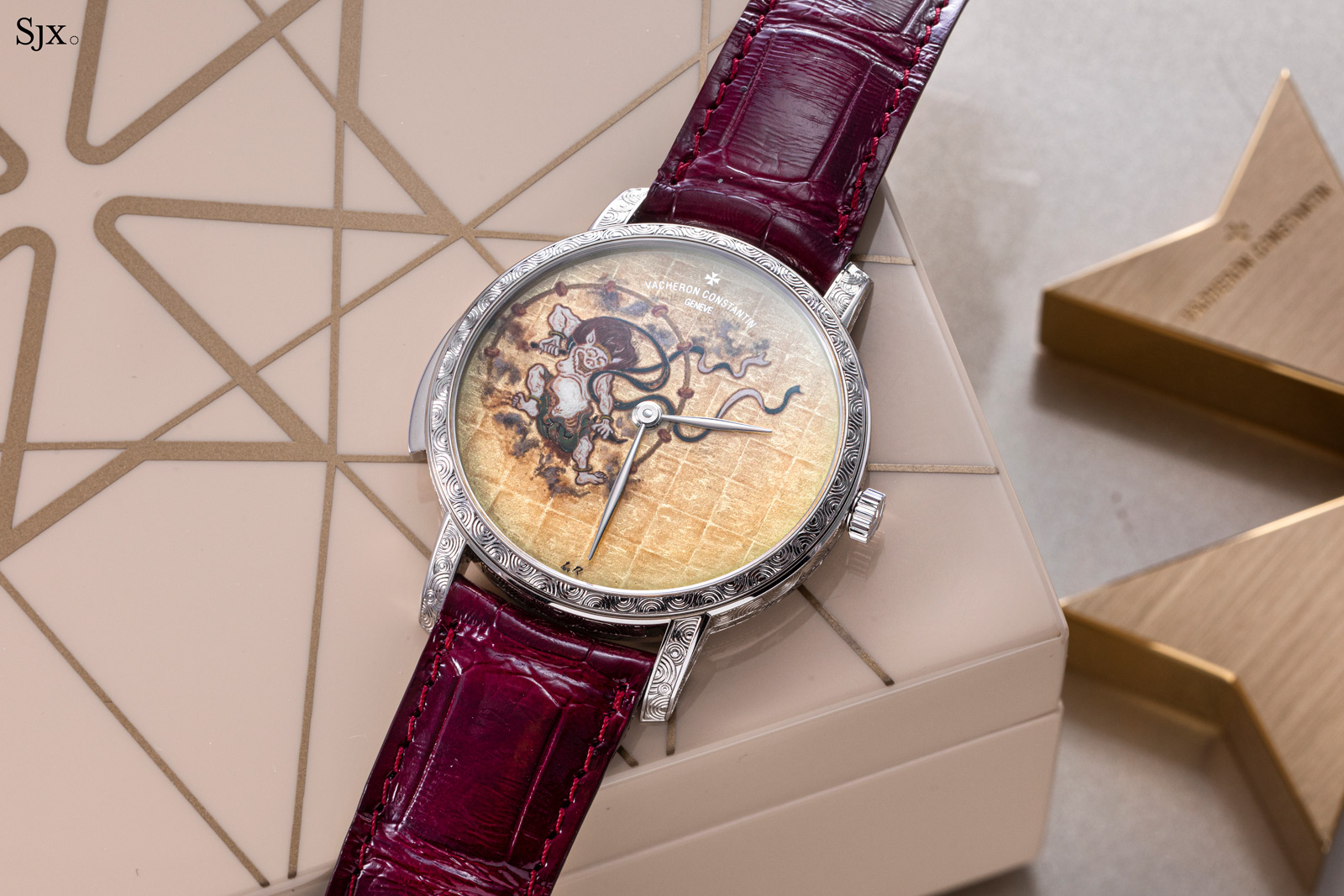
Unlike the original screen, the two watch dials are signed by the enameller with “LR”, although his or her identity is unknown as VC is keeping mum. “LR”, however, deserves recognition for the magnificent work.
Both dials begin as blank yellow gold discs that are engraved by hand with the finest of lines to form the chequerboard pattern that replicates the gold-foil panels of the screens and accurately conveys the texture and ageing of the screens. Once complete, the engraved dial base is covered in a clear fired enamel, also known as fondant, in a technique synonymous with Geneva-style enamelling, which both protects the base and gives it a glossy finish.
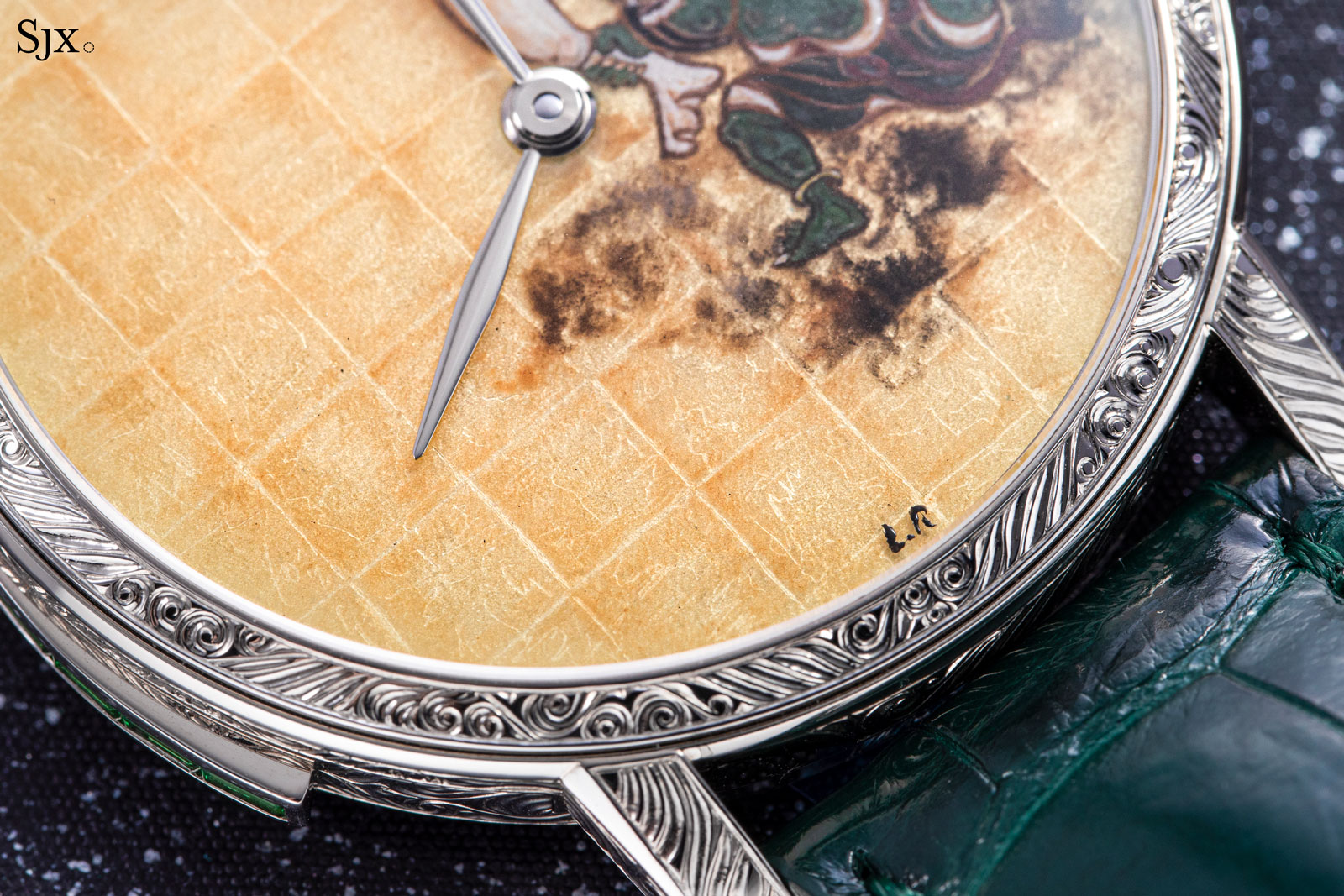
Next comes the miniature enamel painting of each deity, with the “gold foil” enamel as the base. Each god is painted by hand and comprised of several colours. Because each colour has to be fired individually at a particular temperature, the deities are painted in steps and require multiple firings – between is and seven according to VC – to complete.
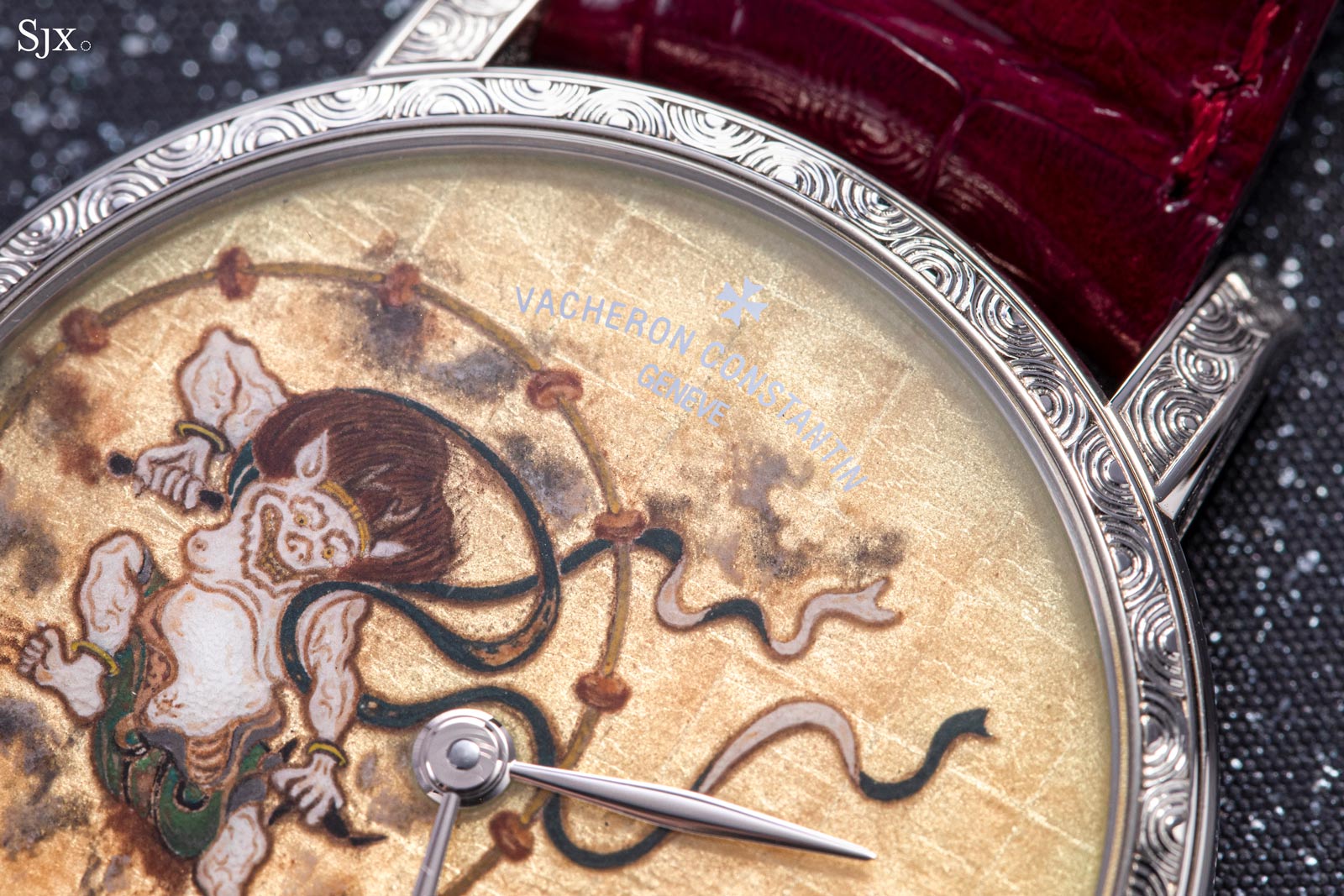
The marvellous miniature enamelling captures the depictions of the screens in extraordinarily fine detail. Just as Sōtatsu did on the screens, the gods are rendered in bold, wide lines. Each has a seemingly fearsome visage at a distance, but wide-eyed and slightly whimsical up close.
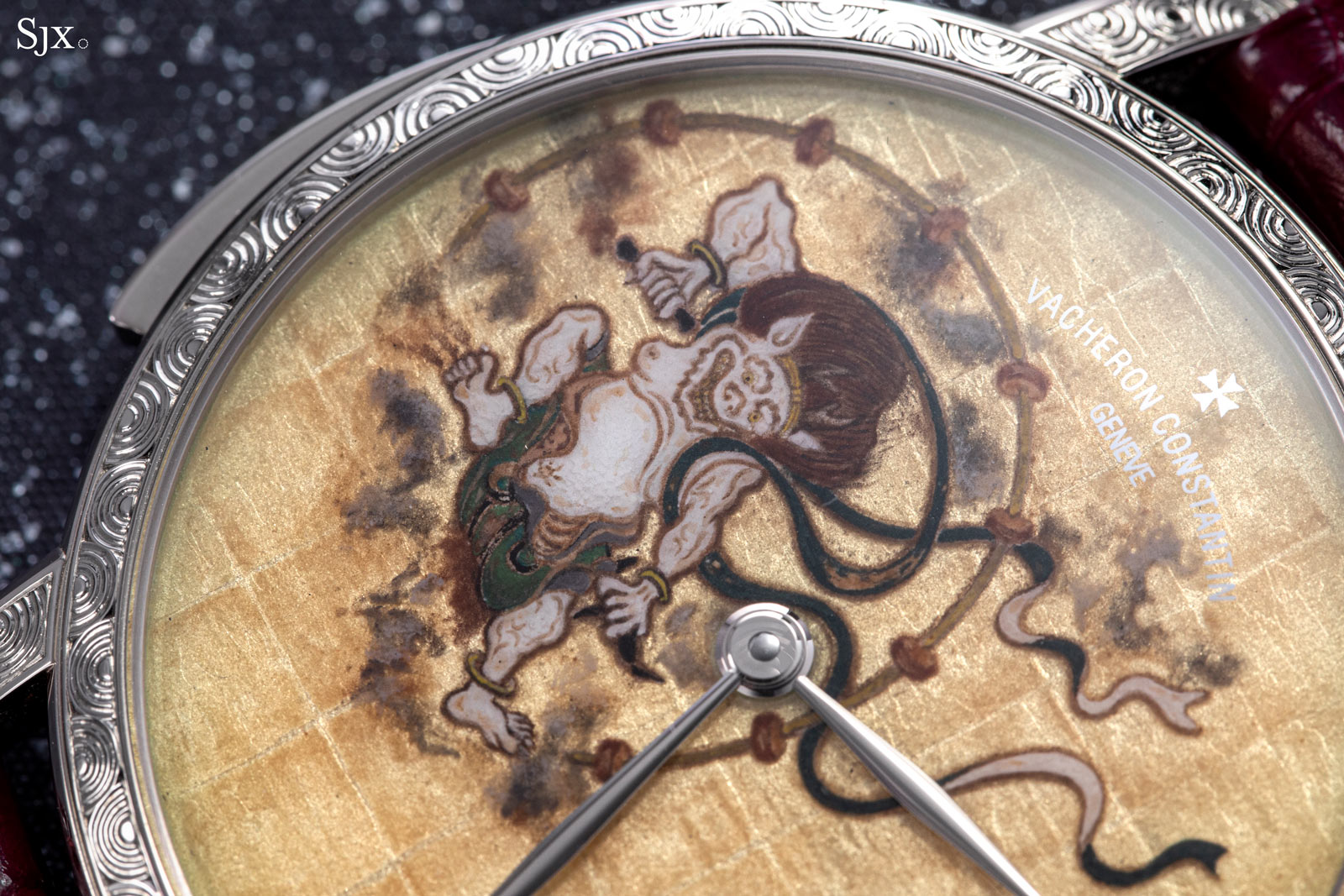
Thunder God wielding a pair of small hammers, surrounded by drums
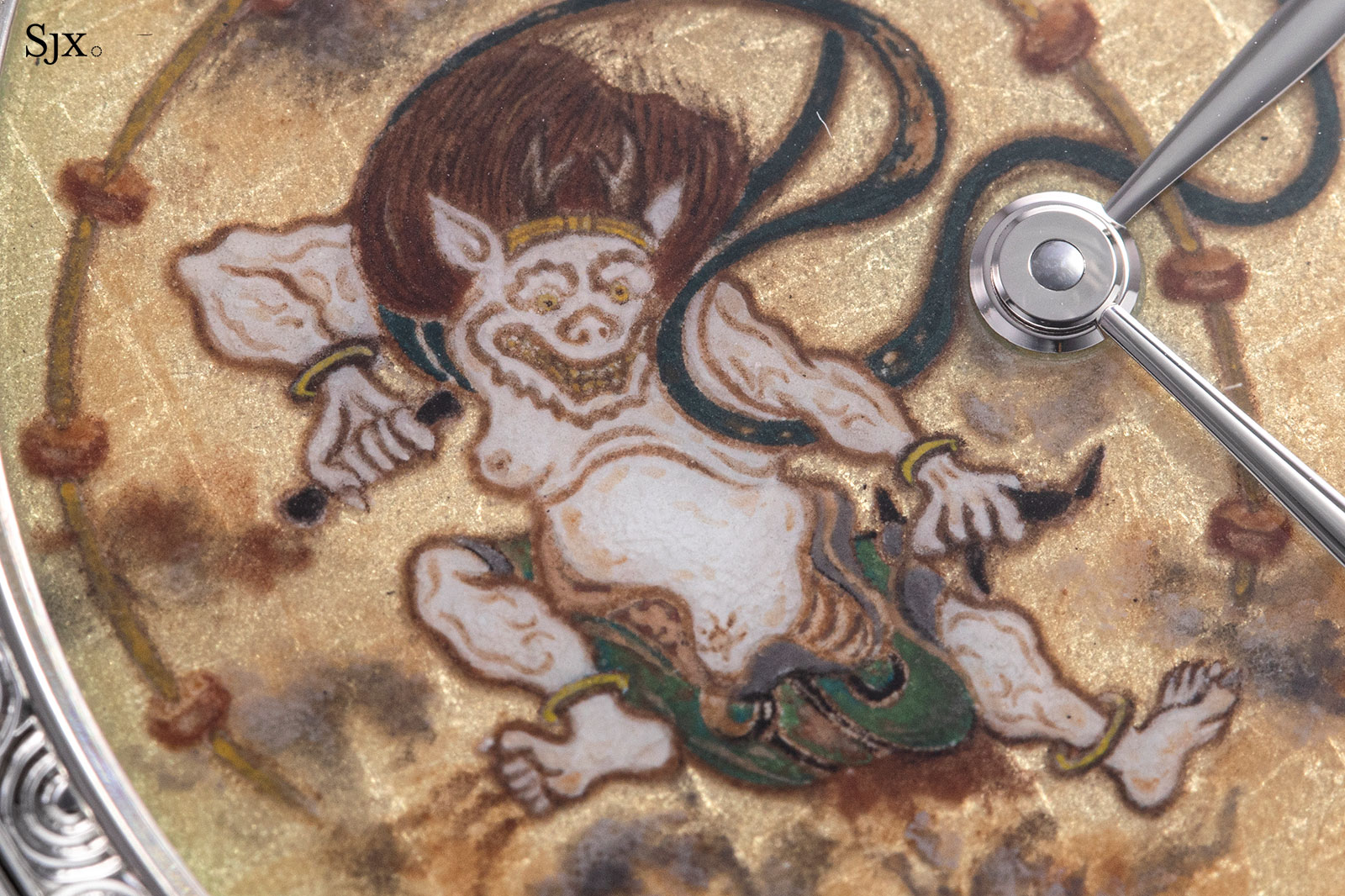
As on the original artwork, the gods appear to be substantial figures yet light enough to be floating amidst dark clouds, replicating the depth and perspective found on the screens. And the deities are painted close to the margins, resulting in negative space and a sense of visual drama.
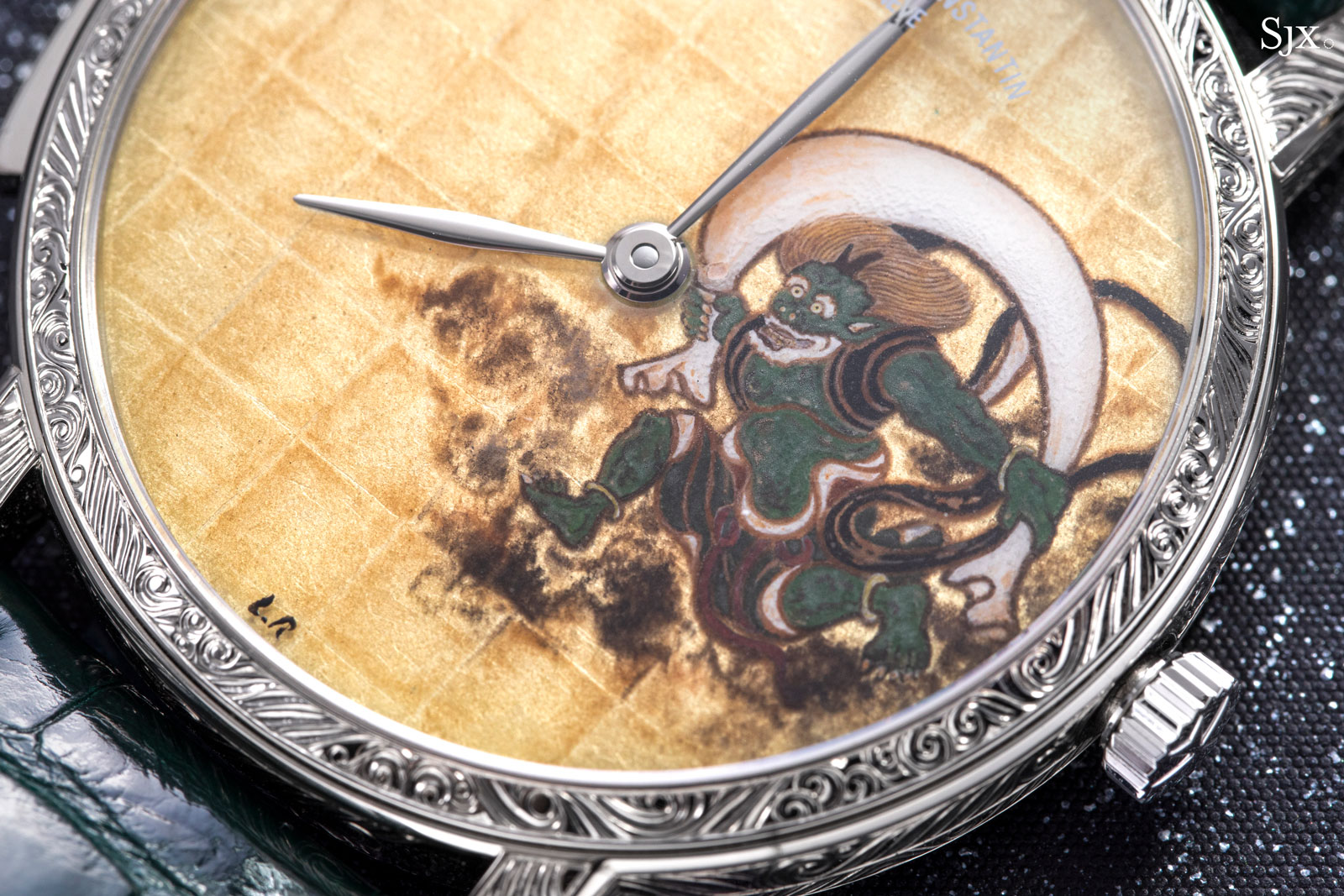
Wind God with his windbag
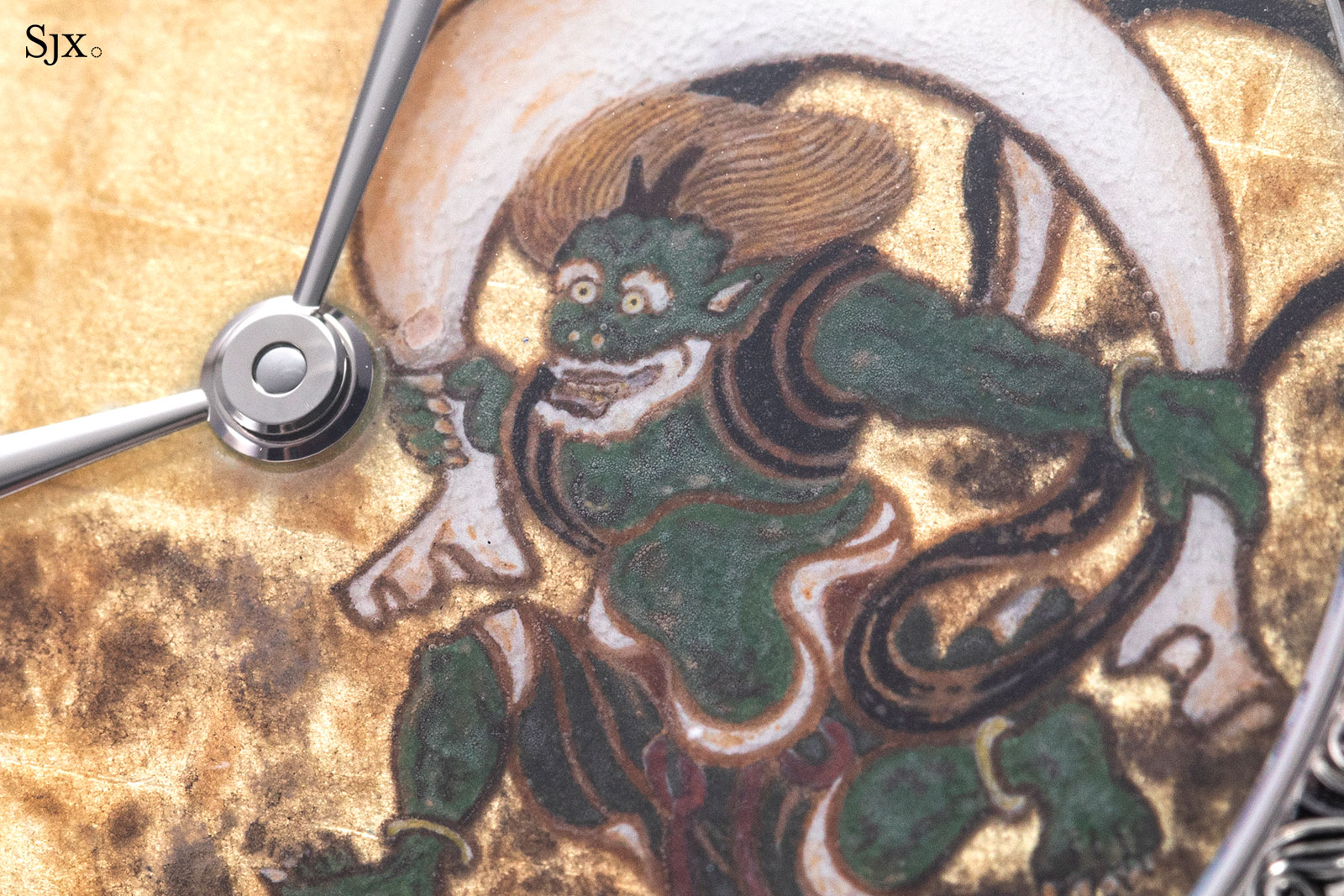
To match the deity on each dial, each watch case is engraved with a corresponding motif – a scroll pattern for “Wind God” and stormy spirals for “Thunder God”. Although the engraving is complementary to the aesthetic, I would have opted out of it given the choice. Both watches have such impressive enamel dials that further decoration feels unnecessary.
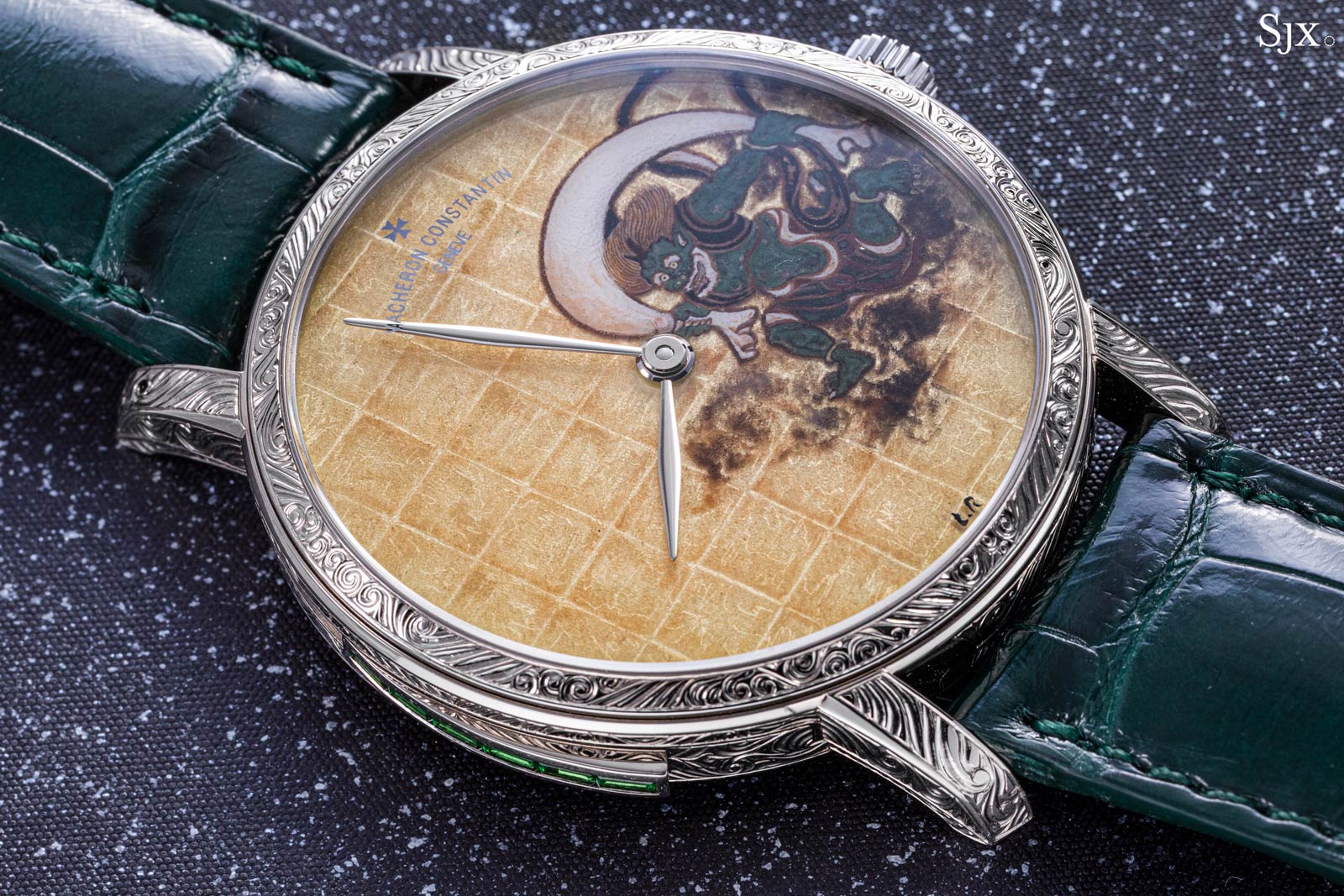
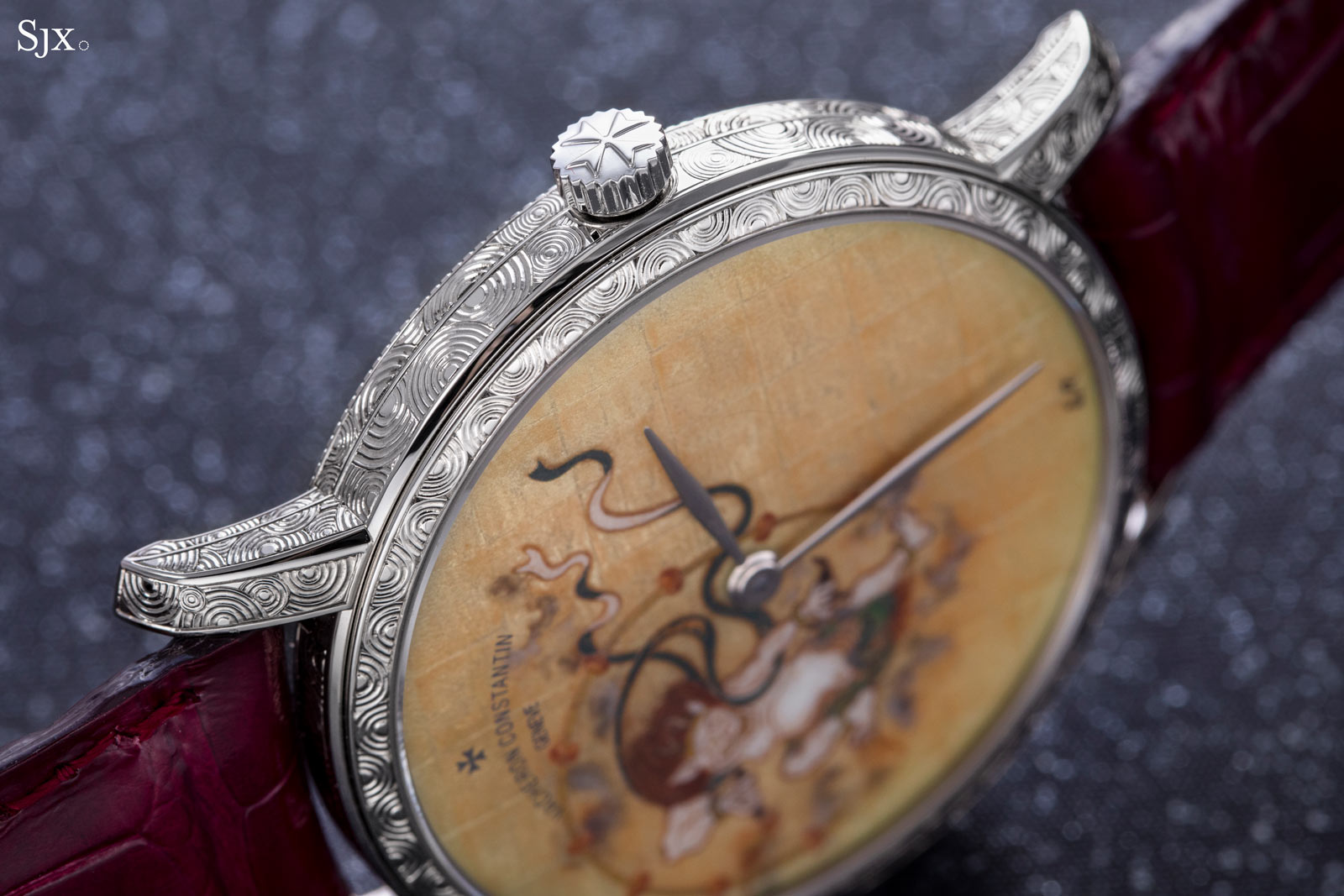
That said, I do appreciate the gemstones on the minute repeater slide, which are decorative but discreet. Each case is set with six baguette-cut stones, tsavorites for “Thunder God” and rubies for “Wind God”.
Perhaps because of the engraving, both watches are unique in being Traditionnelle models. There is no equivalent regular production Traditonelle minute repeater. The standard minute repeater instead is a Patrimony, which has softer, more rounded surfaces on the case. In contrast, the Traditionnelle case is made up of flat surfaces and straight lines that are likely easier to engrave.
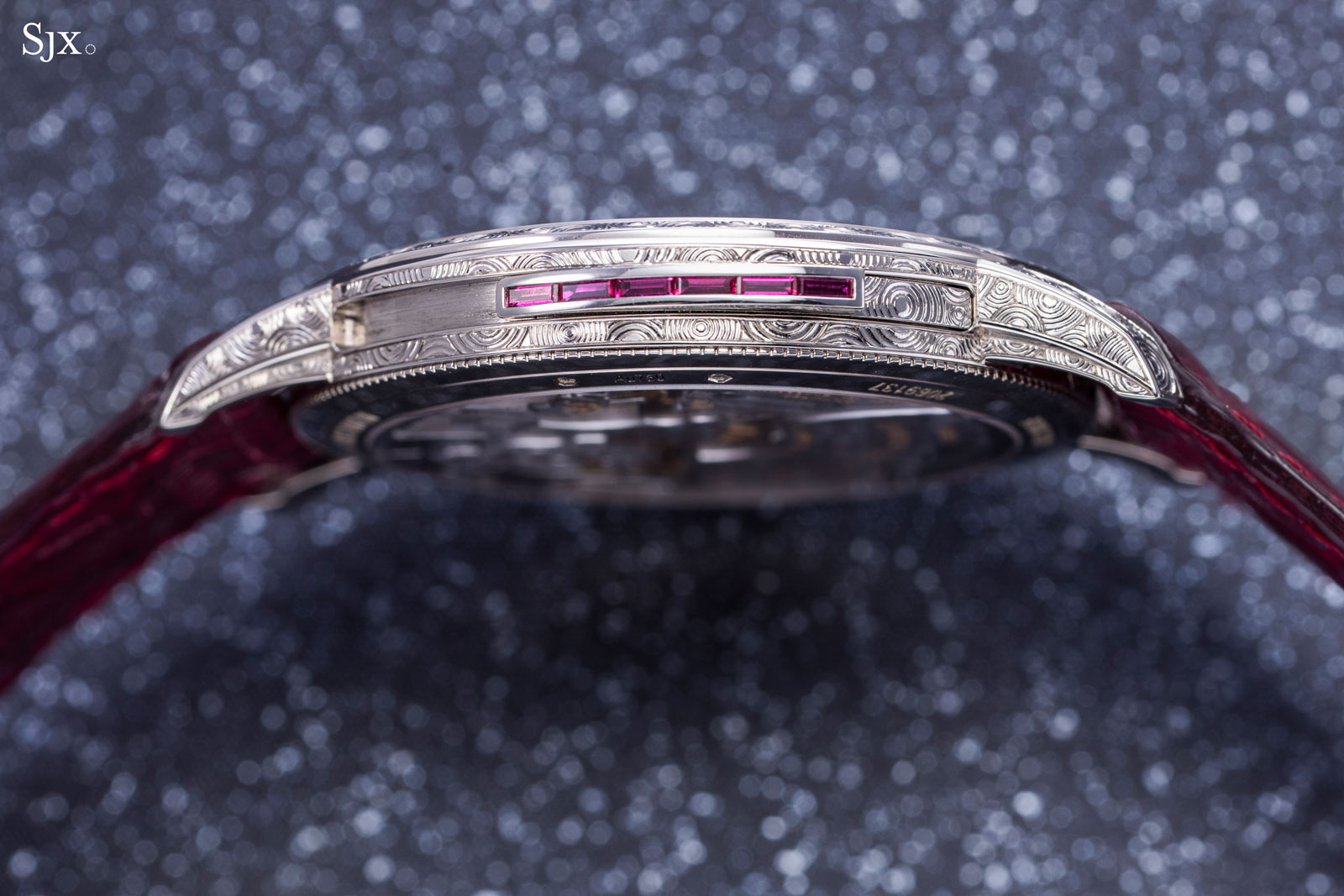
Mechanically, the two watches are identical to the standard models, save for the removal of the subsidiary seconds at nine. The cal. 1731 is a large-diameter, ultra-thin calibre that stands just over 3.9 mm high, about a fifth thinner than most repeater movements.
The movement has a contemporary layout featuring widely spaced bridges that reveal many of the moving parts. The gilded wheels of the going train are visible leading off from the balance wheel, along with all of the key elements of the repeater, including the secondary mainspring and a centrifugal governor shaped like the Maltese cross.
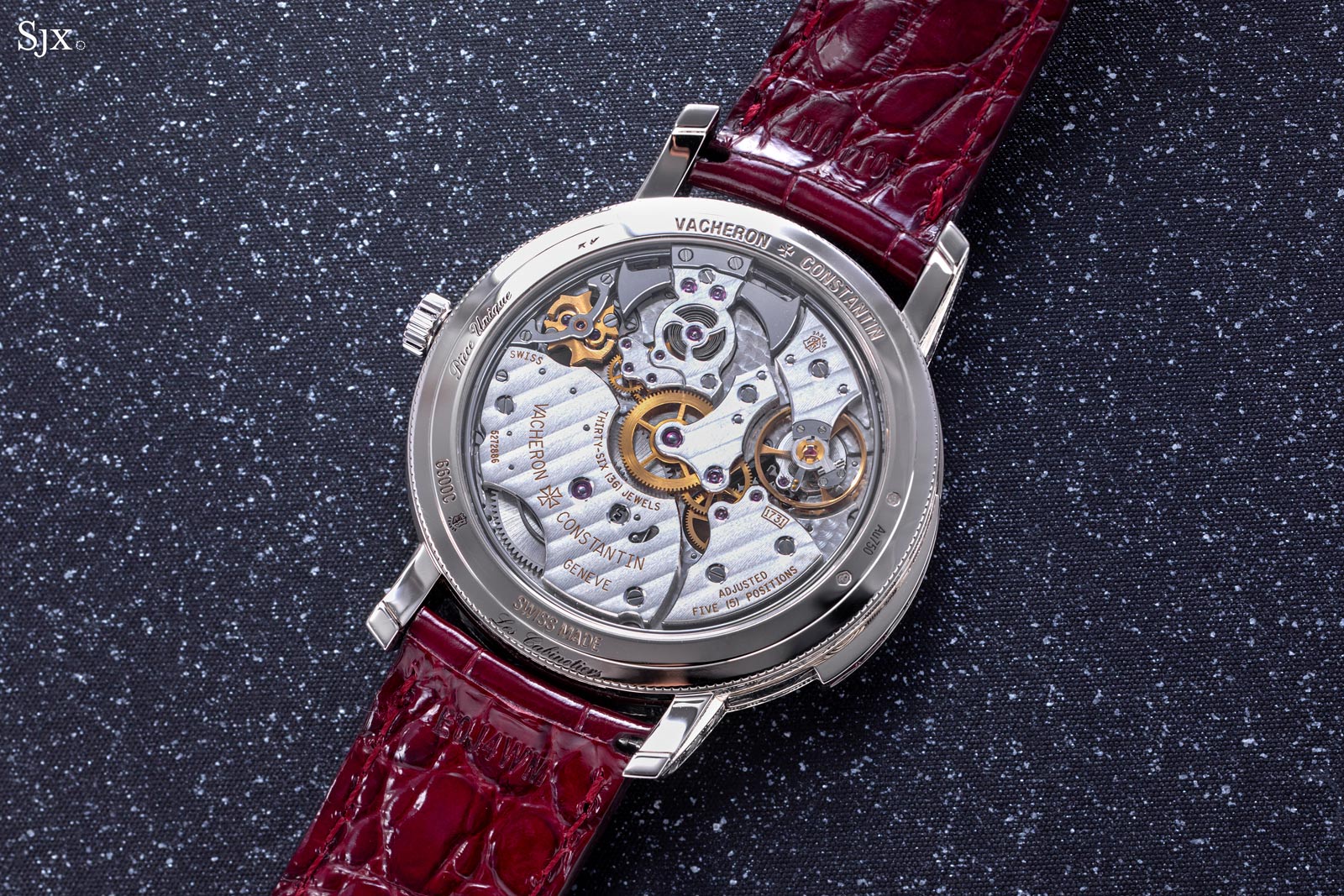
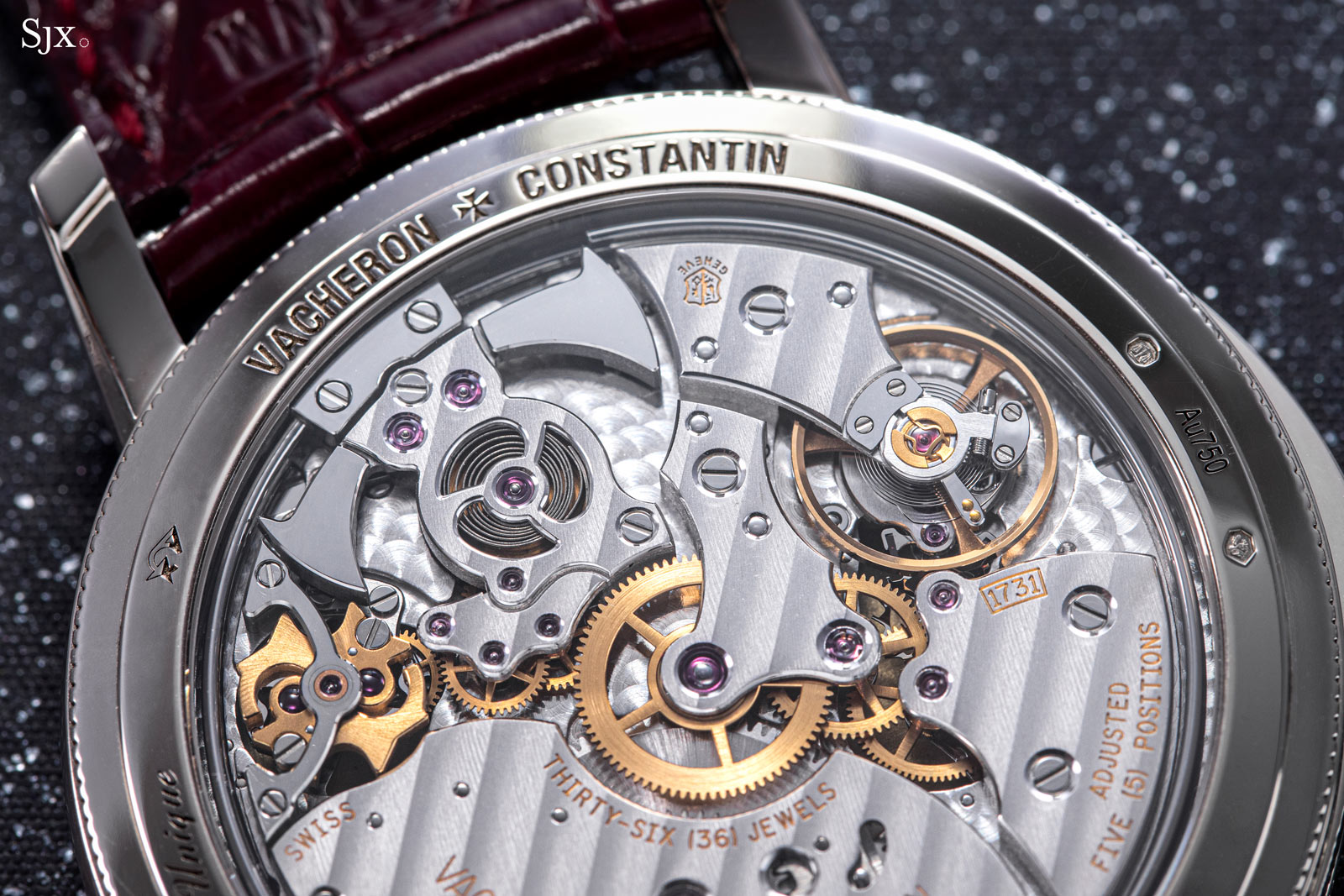
The cals. 1731 inside both watches are finished identically to the movements found inside the regular-production repeaters, so they are well finished though not quite to an artisanal haute horlogerie level.
Considering the price and unique nature of each watch, the movements could certainly do with a more elaborate decoration, especially something that echoes the dial motifs. In fact, I would have preferred the movement engraved instead of the case. And at this price level, VC might just accommodate such a request from the eventual owner of the pair.
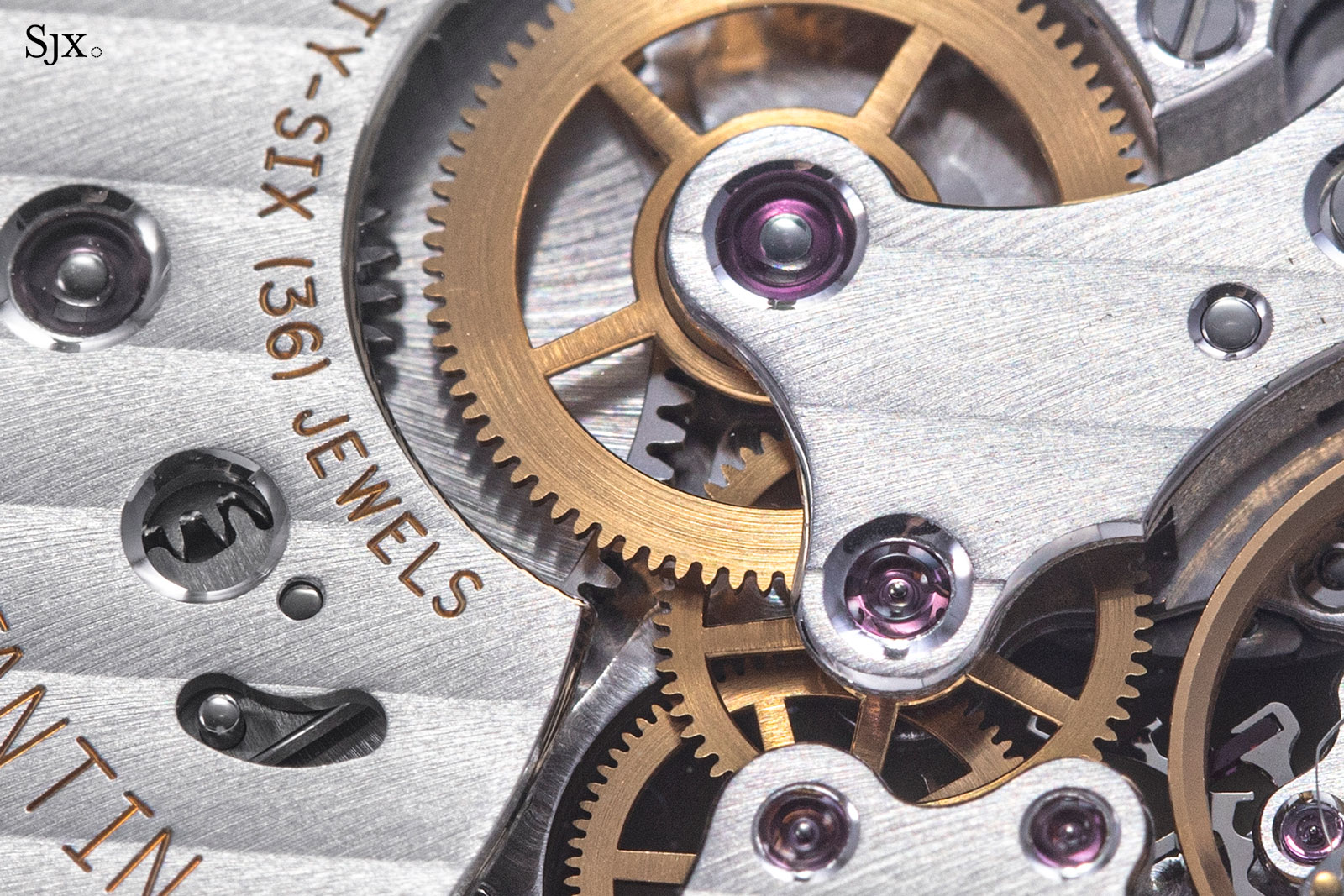
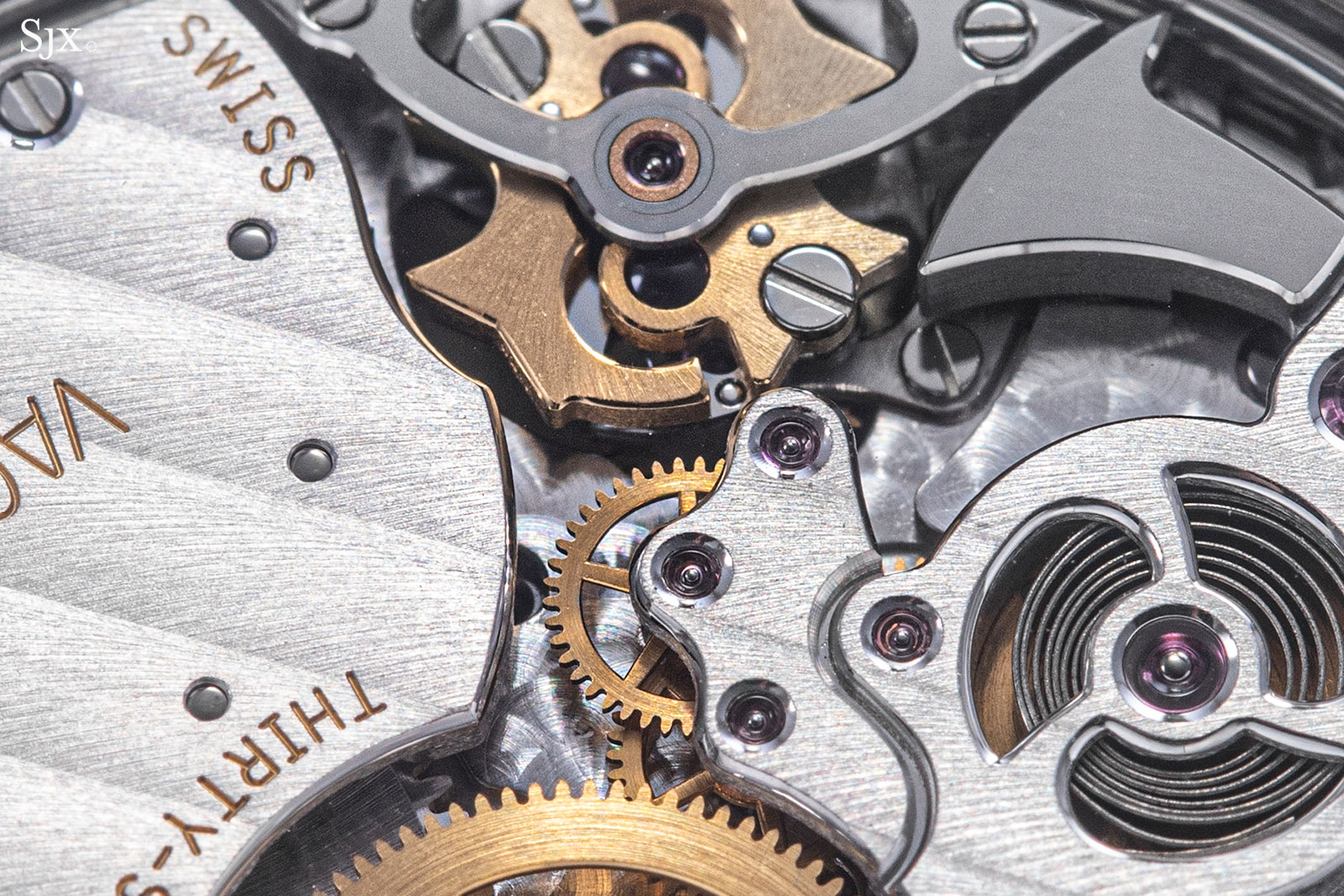
Concluding thoughts
The price of the minute repeating pair is “on request”, though it is likely somewhere in the region of US$1 million. It’s not sensible to describe any million-dollar watch, or even a pair of them, as being reasonably priced, but “Wind God” and “Thunder God” are executed finely enough to make them almost reasonable and certainly one of most compelling propositions amongst VC’s Les Cabinotiers offerings.
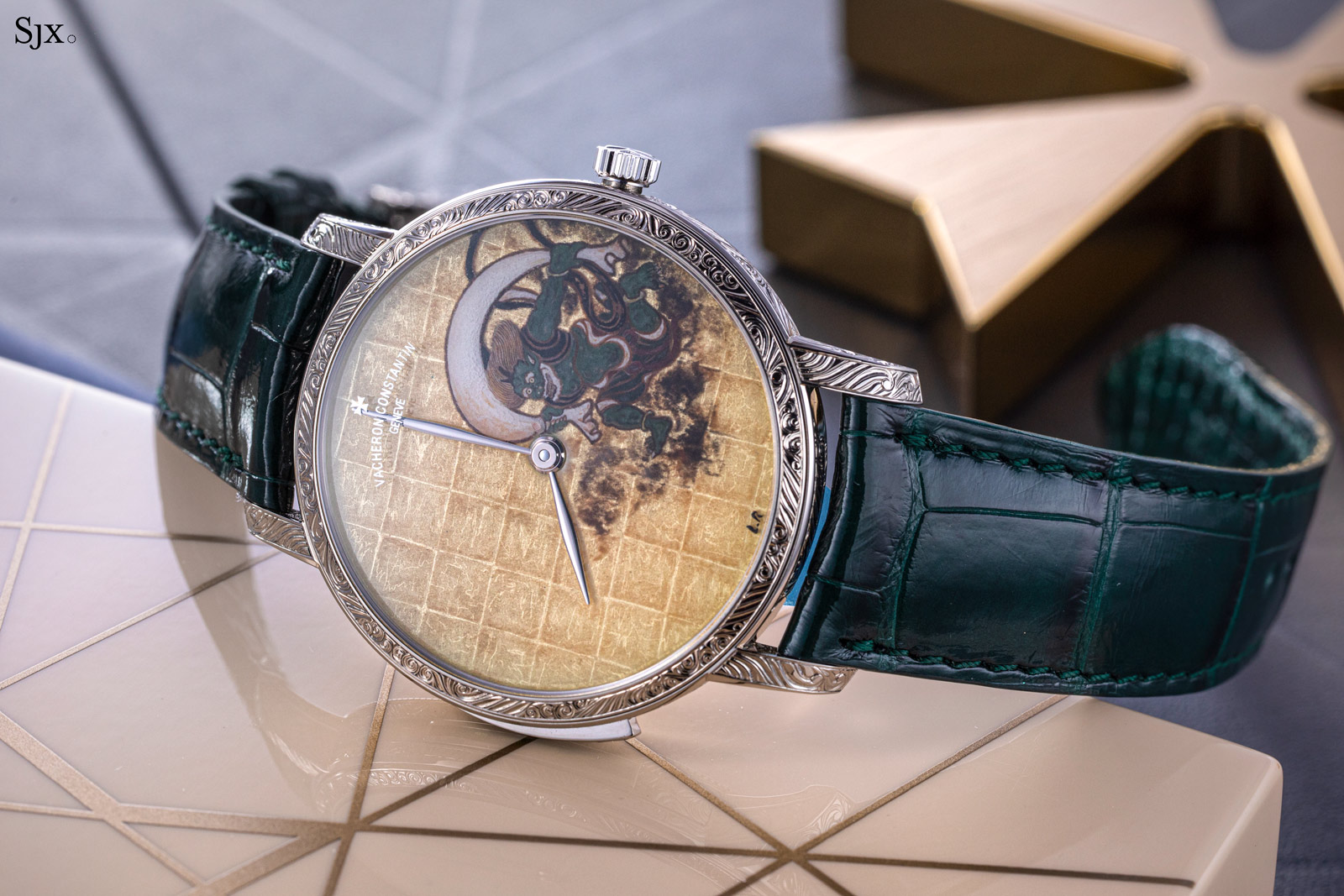
Key facts and price
Vacheron Constantin Les Cabinotiers Minute Repeater Ultra-Thin – Thunder God and Wind God
Ref. 6600C/000G-B731 (Thunder God)
Ref. 6600C/000G-B732 (Wind God)
Diameter: 41 mm
Height: 8.44 mm
Case material: 18k white gold, hand engraved and repeater slide set with gemstones
Crystal: Sapphire
Water-resistance: Not water-resistant
Dial: 18k gold disc decorated with hand engraving and Grand feu miniature enamel
Movement: Cal. 1731
Functions: Hour, minutes, and minute repeater
Winding: Hand-wind
Frequency: 21,600 beats per hour (3Hz)
Power reserve: 65 hours
Strap: Alligator with pin buckle
Limited edition: Each is unique
Availability: Only at Vacheron Constantin boutiques
Price: Upon request (believed to be in the region of US$1 million for the pair)
For more information, visit Vacheron-constantin.com.
Back to top.

